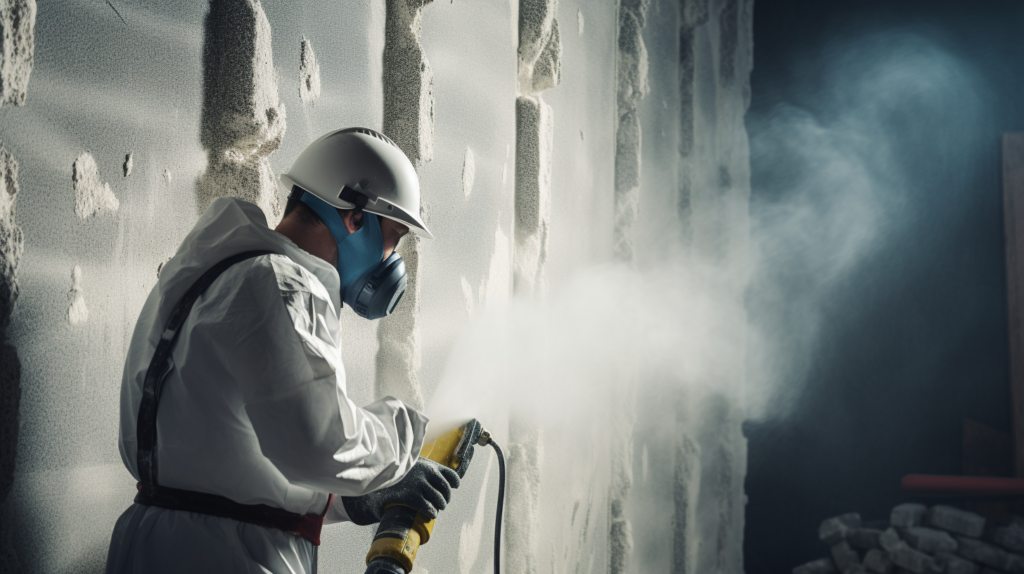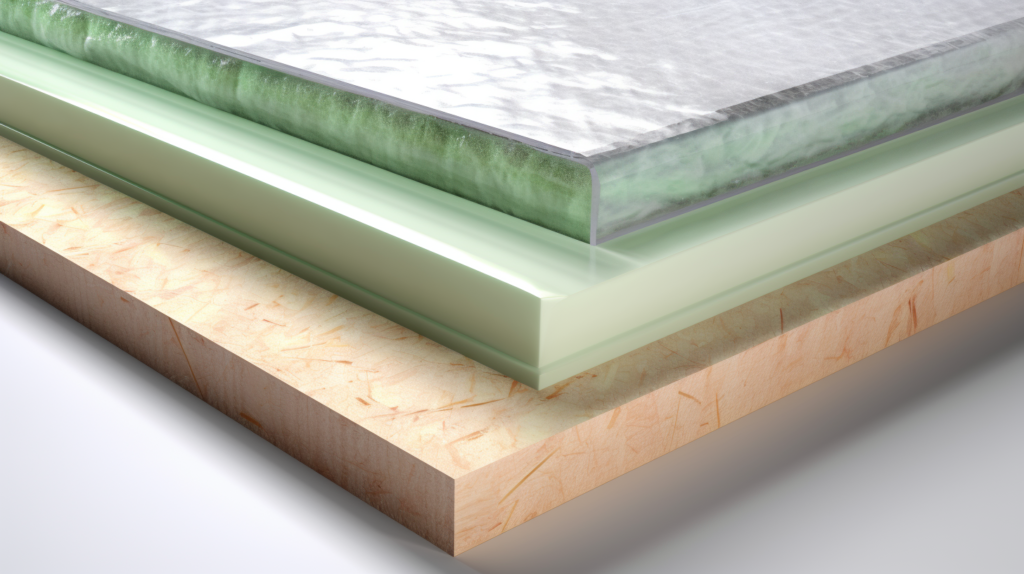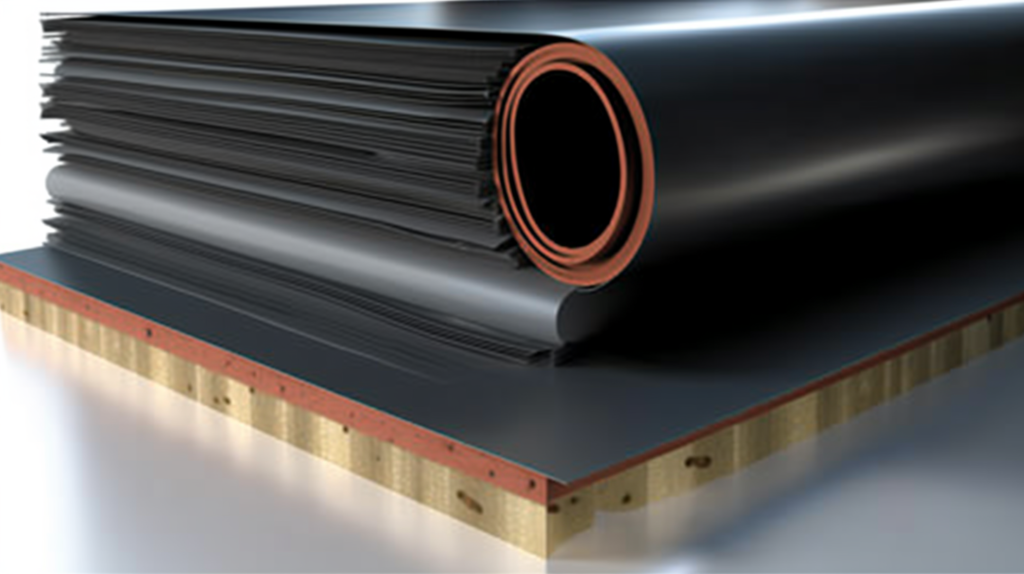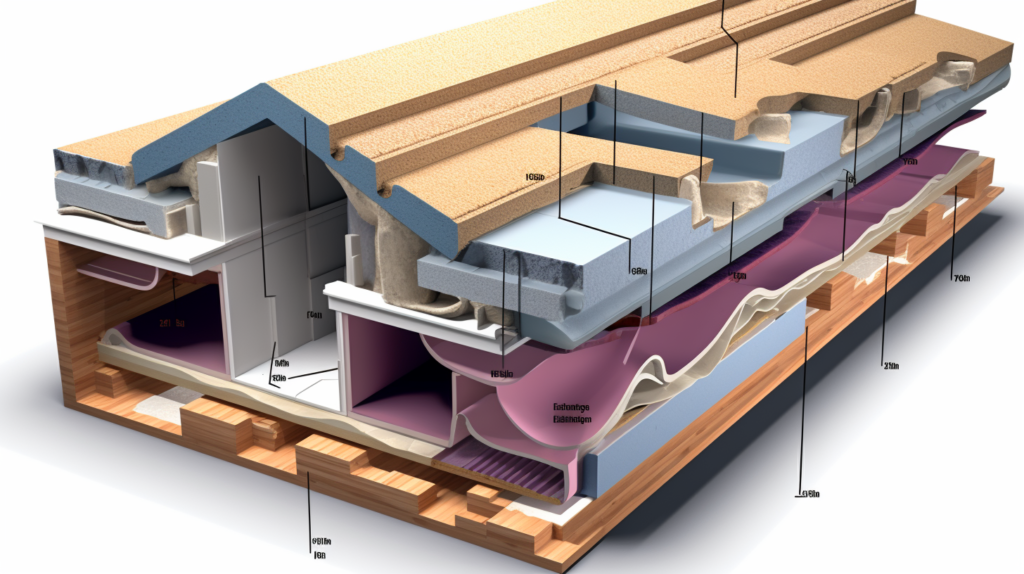If you’ve ever considered using spray foam insulation for soundproofing, you may be disappointed with the results. While spray foam can seal cracks and gaps, it lacks the density and mass required for effective noise blocking.
Despite being a popular insulation choice, basic spray foam has significant limitations when it comes to soundproofing abilities. It does not provide adequate sound transmission reduction across the full frequency spectrum.
There are far better options like fiberglass insulation and layered soundproofing assemblies. Let’s dive in to understand why spray foam falls short of noise control and what the better alternatives entail.
Does Spray Foam Help With Soundproofing?

Spray foam insulation has grown in popularity in recent years as an insulating and air sealing material for both new construction and renovations. The liquid foam is sprayed into cavities and expands to fill cracks, gaps and voids while hardening into a solid plastic.
However, despite being an effective insulator and air barrier, basic spray foam has some limitations when it comes to soundproofing abilities.
There are two main types of spray foam insulation – open cell and closed cell. Open cell foam has a sponge-like structure with pockets of air. Closed cell foam has a denser composition without air pockets.
Both types act as decent insulators thanks to their air trapped composition. But this same attribute results in less than ideal sound blocking qualities.
The foam itself lacks enough density and mass to effectively prevent noise transmission. Sound waves and vibrations easily pass through open or closed cell foam with minimal damping.
In terms of Sound Transmission Class (STC) ratings, a common measurement of soundproofing effectiveness, basic spray foams score quite low in the range of 30-35.
These STC values indicate spray foam alone does not provide sufficient sound blocking across the frequency range. Install an inch of foam and it may slightly muffle some mid to high frequency noises like voices and television.
But lower frequencies produced by home theater systems or traffic will permeate right through. Additionally, the foam does nothing to address structure-borne noise like footsteps or closing doors.
While spray foam alone is not an optimal noise barrier, it does excel at sealing air gaps and leaks around cracks, seams and openings. This attribute can help reduce sound transmission from gaps that would otherwise let noise pass through.
Spray foam constrained by studs and joists also dampens vibration somewhat. But relying solely on foam is insufficient compared to alternative soundproofing approaches.
Recommended Alternative 1: Fiberglass Insulation

Fiberglass insulation provides far superior sound blocking capabilities compared to spray foam alternatives. Fiberglass is composed of extremely fine glass fibers, spun and pressed into “batts” or rolls for installation in walls, floors and ceilings.
The key properties that make fiberglass effective for soundproofing include its density and absorption.
Fiberglass insulation achieves density ratings from 0.5 to 6 pounds per cubic foot. The higher the density rating, the more tightly compacted the material.
As density increases, less air remains trapped in the insulation which improves sound absorbing performance. Properly installed dense fiberglass insulation prevents noise transfer by damping sound vibrations rather than letting them transmit through the cavities.
Standard fiberglass insulation provides an STC rating between 40 to 50, significantly higher than spray foam kits. The combination of density, absorption, and fiber composition enables fiberglass to reduce noise across a wider spectrum of frequencies from low bass to high pitch.
It addresses both airborne noises like traffic, and structure-borne vibrations from footsteps or slamming doors.
Maximizing the soundproofing benefits relies heavily on correct installation. Improperly installed fiberglass with gaps or compressed sections becomes much less effective. Filling every cavity completely without gaps eliminates sound paths.
Additionally, extra density can be added using a technique called “compression packing” to further improve performance.
Alternative 1 Add-on: Layered Approach for Best Soundproofing
While fiberglass alone improves sound transmission loss, the most effective method combines multiple layers of different soundproofing materials and techniques. This isolates both the noise source and transmission path while reducing reverberation.
Executed properly, a layered plan can virtually eliminate noise penetration through walls, floors and ceilings.
The first step is installing a noise blocking layer on the studs or joists, such as dense fiberglass insulation discussed previously.
On the interior side, layers of insulation foam such as mineral wool or fiberglass wool are added. The extra mass dampens any residual noise that passes the other layers.
Next, resilient channels are fastened horizontally across the studs and joists before mounting the drywall. This decouples the drywall from the wall framing eliminating vibration transfer.
Sealing the assembly correctly is also imperative for optimum performance against airborne noise. Acoustical caulk and sealants will seal even the smallest cracks or openings throughout the framework that could allow sound leakage.
Taking this comprehensive, layered installation approach significantly reduces noise across the entire frequency spectrum.
Alternative 2: Nitrile Butadiene Rubber (NBR) Panels

In situations where entirely new wall construction is not feasible, installing panels made from nitrile butadiene rubber (NBR) can provide reasonable sound dampening improvement.
These dense panels are manufactured with a core viscoelastic polymer made from NBR that delivers excellent noise blocking qualities.
NBR panels can be installed directly onto existing walls using either construction adhesive or mechanical fasteners. The material’s high density blocks a considerable amount of noise transmissionattempts to penetrate through.
This makes NBR panels effective at reducing airborne sounds like voices, televisions or traffic noise. They perform well across higher frequencies.
NBR panels provide a simpler installation path to achieve some sound dampening improvement without full teardowns or construction work. They can be cut to size and installed over existing drywall.
Just ensure proper perimeter sealing with acoustical caulk to prevent sound flanking around the edges. For whole-house soundproofing utilize NBR in conjunction with insulation and vibration damping.
How To Look for Materials For Better Soundproofing

When researching and comparing soundproofing materials, one of the most important specifications to look for is the Sound Transmission Class (STC) rating. The STC rating assigns a numerical value that represents the material’s effectiveness at preventing noise transfer.
In other words, it measures the level of sound blocking capability.
STC testing is conducted by laboratories under rigorous protocols and standards to determine a definitive STC number for any wall, ceiling or floor assembly.
The results demonstrate how well that product reduces both airborne noise like music, television, voices etc, as well as structure-borne noise such as footsteps and vibration.
The scale ranges from 0 to 70+ with higher values indicating better soundproofing ability. For reference, a standard hollow wood door rates about 20 STC while a solid core wood door achieves closer to 30.
Quality soundproofing materials suitable for home theaters or studios generally rate STC 50 and above. The highest end commercial products can exceed 60 STC.
Compare STC values when selecting soundproofing materials as a higher number means greater noise reduction. Combining several layers of high STC materials provides sound dampening across the entire frequency range from low bass to high pitch.
While no single material blocks all sound, strategic use of higher STC products delivers comprehensive noise control.
Properties Of A Good Soundproofing Material

Optimizing the selection of soundproofing materials and products relies on several factors: density, mass, STC rating, and intelligent layering being among the most important. Density relates to how compact and void-free the material composition is.
Dense substances eliminate air gaps that transmit noise.
Mass correlates with the thickness and overall weight of the material. More mass means greater resistance to vibration and noise energy.
Consider the STC rating and target 50 or higher as discussed previously. Finally, layer different soundproofing materials strategically to capitalize on their unique attributes.
For example, absorbent insulation like rockwool combined with a mass loaded vinyl barrier and thick rubber underlayment. Intelligently combined, these layers block both airborne and structure-borne noises across all frequencies.
Proper installation is equally critical so materials make 100% direct contact eliminating voids.
Work with qualified acoustical consultants to plan your soundproofing strategy, and experienced contractors for professional installation.
With the right materials and execution, your commercial or residential space can become an acoustically isolated oasis of peace and quiet.
Conclusion
When it comes to effective soundproofing, using the right materials is key. Spray foam insulation alone is not enough, but dense fiberglass insulation paired with resilient channels and layered finishing materials can significantly reduce noise transmission.
For simpler DIY upgrades, install NBR panels adhered directly to existing walls and ceilings. Be sure to select soundproofing products with higher STC ratings.
Combining mass, density, and intelligent decoupling design principles leads to spaces with exceptional acoustic isolation across the entire frequency range. With some diligent planning and proper installation, you can transform a noisy room into a peaceful sanctuary.
Partner with experienced acoustical consultants and contractors to leverage their expertise executing the ideal soundproofing solution for your needs and budget.
